The world of mountain biking can’t sit still for a minute. Wheels are getting bigger, tyres are getting fatter, geometry’s getting slacker and pedal power is getting a power up.
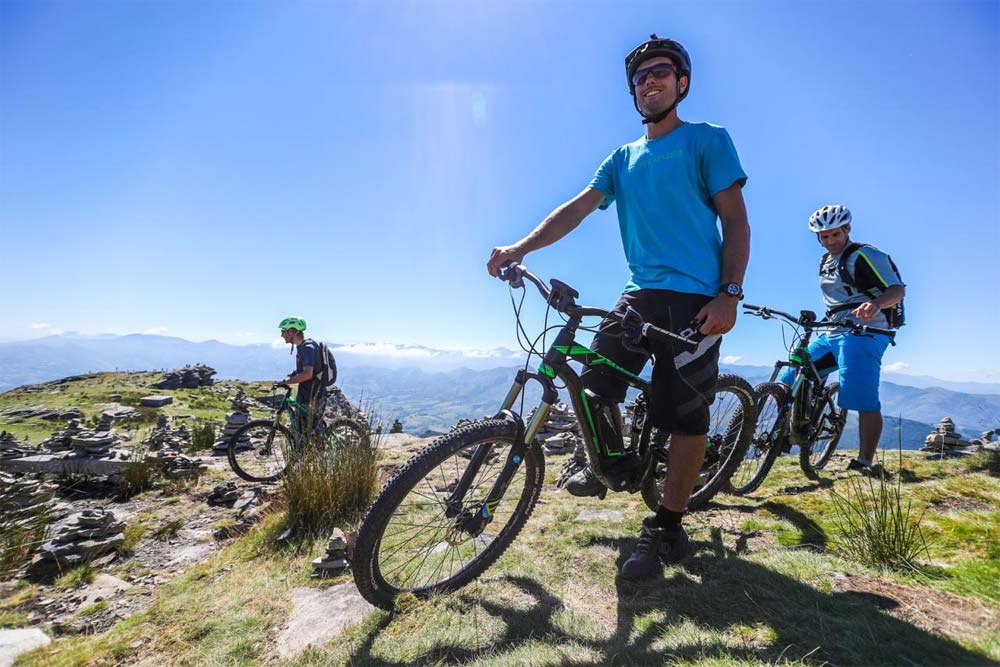
It’s a bewildering landscape for any newcomer to the sport. But, the e-bike phenomenon is cutting through the noise and sparking the interest of an ever growing number of people.
In France, electric-assist mountain bikes are no less controversial but the argument for embracing them is finally winning out.
In France, the attitude towards electric mountain bikes is overwhelmingly positive.
To understand why, you just need to look at the terrain. Huge mountains, massive vertical drop, and miles and miles of epic singletrack. This has always been the domain of fit and experienced riders.
Not any more, electric mountain bikes (eMTBs) have levelled the playing field.
Now, mountain biking is accessible to everyone from people getting back on a bike for the first time after injury to new parents and busy career types who just don’t have time to put the training miles in. And that once brutal 45 minute climb now takes half the time and is just as much fun as the descent.
E-bikes make cycling accessible to more people.
The Fédération Française de Cyclisme (FFC), France’s equivalent of The British Cycling Federation is very clear in its support for e-bikes. “E-bikes make cycling accessible to more people” says Joaquim Lombard the FFC’s national technical advisor. Anything that gets more people riding bikes helps fulfil the FFC’s underlying mission.
The organisation manages a huge network of waymarked trails across France and they’re all open to e-bikes. “We put electric bikes in the same category as regular bikes, so where you’re allowed to take a bike, you can also take an e-bike. We just consider them normal bikes.”
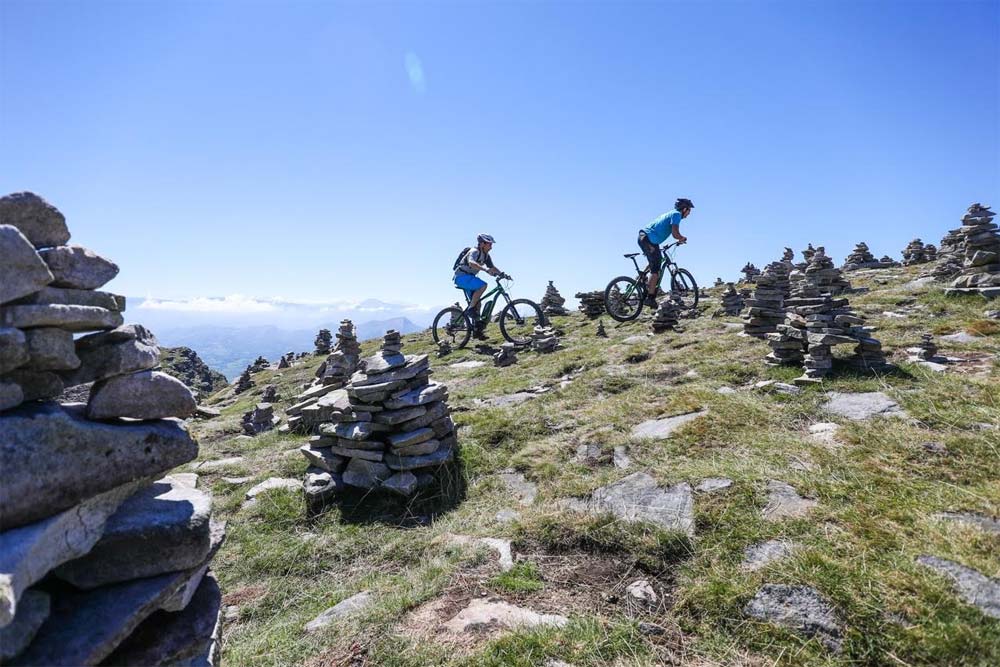
Not everyone’s 100% on board though. In the Vercors Massif in south-east France there’s an optional section of the Grande Traversée du Vercors multi-day ride where e-bikes have been banned. It’s a natural reserve and the argument goes that e-bikes make the area so easily accessible that it will be overrun with visitors.
They could have a point. If the extra push from an electric motor means you can do the ride in half the time, the broader appeal has to mean more wear and tear on Mother Nature. So far, this view is supported by the International Mountain Bicycling Association (IMBA) who is pushing to ensure that mountain bikes and anything with a motor are classified separately. The debate continues.
For an electric bike to be viewed in the same light as a normal bike, it has to tick some boxes.
For the time being e-bikes with pedal assistance up to 25 kph and maximum continuous rated power of 250 W are excluded from complicated European type-approval legislation.
Even within Europe the interpretation of the legislation can vary from country to country. In France though, for an electric bike to be classified as a normal bike the rules are clear:
- The electric motor can only kick in when the rider is pedalling and must cut out as soon as you stop pedalling.
- The motor must cut out at 25 kph. However, the bike can go faster without assistance.
- The motor must not put out more than 250 watts of nominal power.
So in France at least, things have moved on from the days of miss-classifying e-bikes as motor vehicles.
But as the technology improves, batteries will get lighter and last longer inevitably opening the gate to faster eMTBs. This is where the line between e-bike and moped gets blurred and it’s likely organisations like the FFC will have to revisit their regulations in the not so distant future.
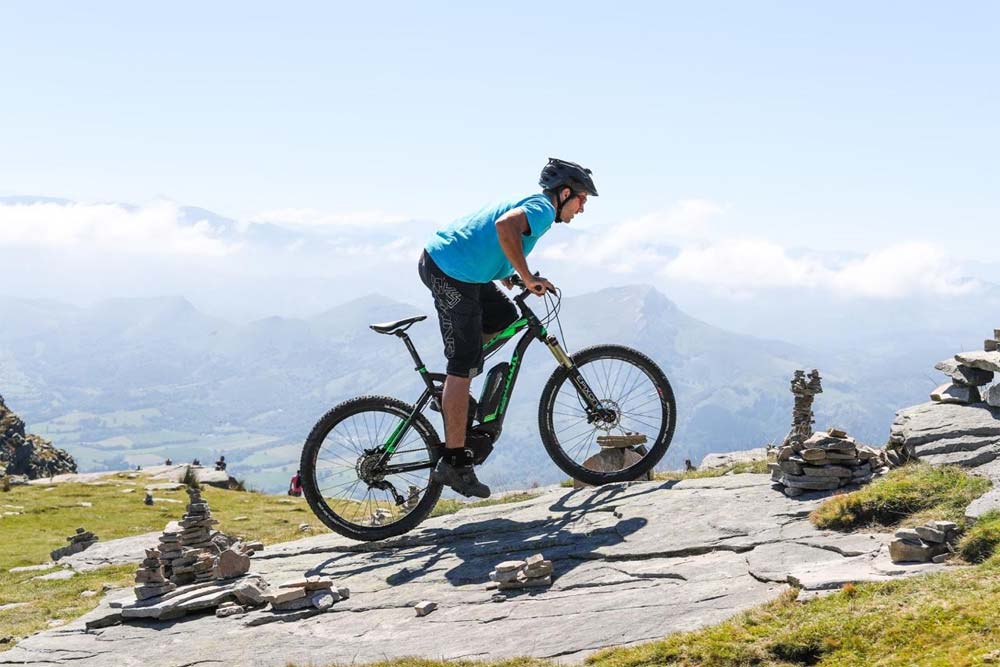
Electric mountain bikes are well suited to France’s big mountain terrain.
In their current form, eMTBs are particularly well suited to France’s mountainous terrain. It’s no surprise then to see bike hire shops and tour operators riding the tide of e-biking’s growing popularity and welcoming a new generation of cycling enthusiasts. For mountain resorts, offering eMTB programs during the summer is a welcome opportunity to increase off-season revenues.
Christophe Febvay from Les Roues de Lilou, which rents bikes and runs mountain biking tours in the Basque Country, is a big fan of electric bikes. “eMTBs come into their own on long climbs in the mountains. Young and old riders and riders lacking some fitness can all enjoy what would otherwise be a very challenging itinerary” he says. He adds that despite riding normal mountain bikes regularly, he loves heading out on the e-bike. “You reach the top of an otherwise exhausting climb with plenty of energy for the descent. For me that means that I ride faster and better on the downhill because I haven’t exhausted myself on the uphill.”
But make sure you know what you’re getting into.
Because eMTBs make the trails so much more accessible, the uptake tends to be concentrated amongst more inexperienced riders and families. As such, there are two main considerations when choosing an itinerary – technical difficulty and the length of the ride:
Electric mountain bikes are best suited to easier cross-country trails. Trails with very technical sections or sections where you need to push or portage your bike aren’t ideal because the bikes are so heavy. Whereas a normal full-suspension mountain bike will weigh-in around 14 kg, the electric version will be 8 to 10 kg heavier. That makes a big difference if you have to carry your bike for any distance.
The second consideration is the length of the ride. On gently undulating terrain a fully charged battery should be good for 60 km. But if you choose a 50 km loop with lots of vertical ascent, running out of battery is a real possibility. And, pedalling an e-bike with no power assistance is no fun at all, especially in the French mountains.
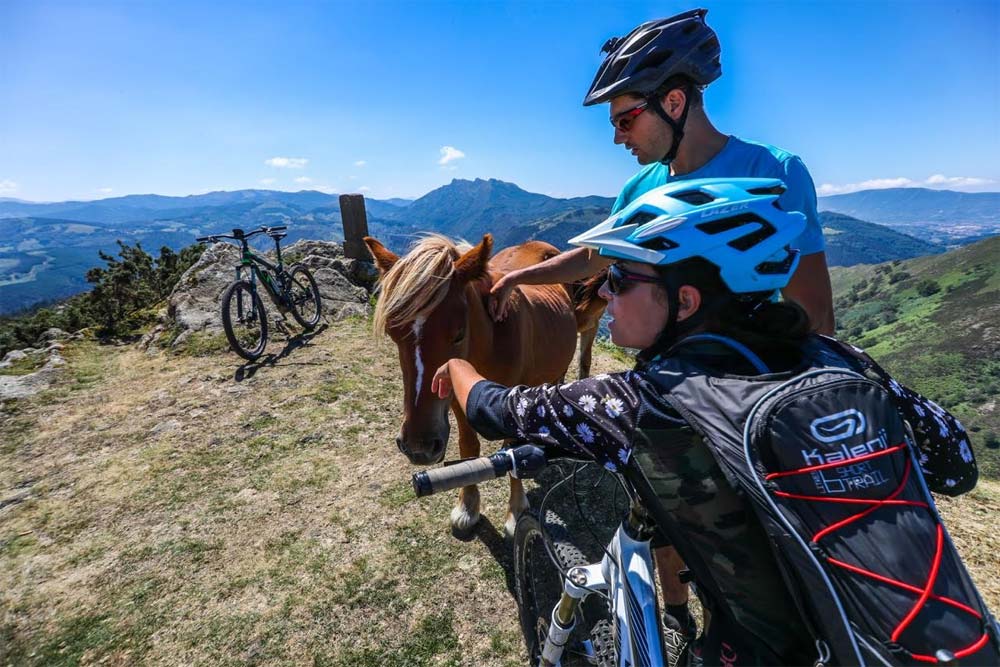
The FFC are on the case. They’ve started identifying trails that are most well suited to e-bikes and labelling them on maps that are available free from tourist offices.
Gréoux-les-Bains in the Alpes-de-Haute Provence in south-east France is one such place that’s ahead of the curve. A spa town, it’s a popular destination for people getting back into sport and also happens to have 280 km of trails on its doorstep in an area called Verdon des Collines. With hilly but not mountainous terrain and waymarked loops from 3 km to 40 km, it’s a great place to discover e-biking. The tourist office in Gréoux-les-Bains will point you in the right direction for electric mountain bike hire and guided rides.
eMTB events are growing in popularity.
Inevitably, this new branch of mountain biking is slowly percolating into the competition scene. More and more e-bike specific races are popping up and the sport is becoming a genuine discipline in itself. The biggest 100% electric mountain biking event in France, the ElectrEnduro, takes place in June near Lyon and is now into its third year. The event sees 300 participants compete in three races over two days including the 42 km flagship event. To do well it’s not just about fitness and bike handling, but also how you manage battery life so you have the most useable wattage when you need it most.
eMTB do’s and don’ts
The number of eMTBs on the trails is only going to increase. So in the interest of long term harmony with other trail users, it’s up to eMTB riders themselves to represent the sport in a positive way. With that in mind, here’s some eMTB do’s and don’ts:
| DO’S: | DON’TS: |
|---|---|
| Do stick to the marked trail. | Don’t start a ride without checking your battery has enough charge for the whole route. |
| Do keep your speed under control | Don’t take on a trail that is too technical and might involve having to push or carry your bike. |
| Do be careful when approaching a blind corner (especially on a climb). | Don’t cut switchbacks. |
| Do give way to hikers and other trail users. | Don’t ride beyond your limits. |
| Do check that eMTBs are permitted if in a natural reserve. | Don’t head off without appropriate gear for changes in weather or other conditions. |
| Do wear a helmet and appropriate safety gear. | Don’t scare the animals (Give them plenty of room and time to adjust to you). |
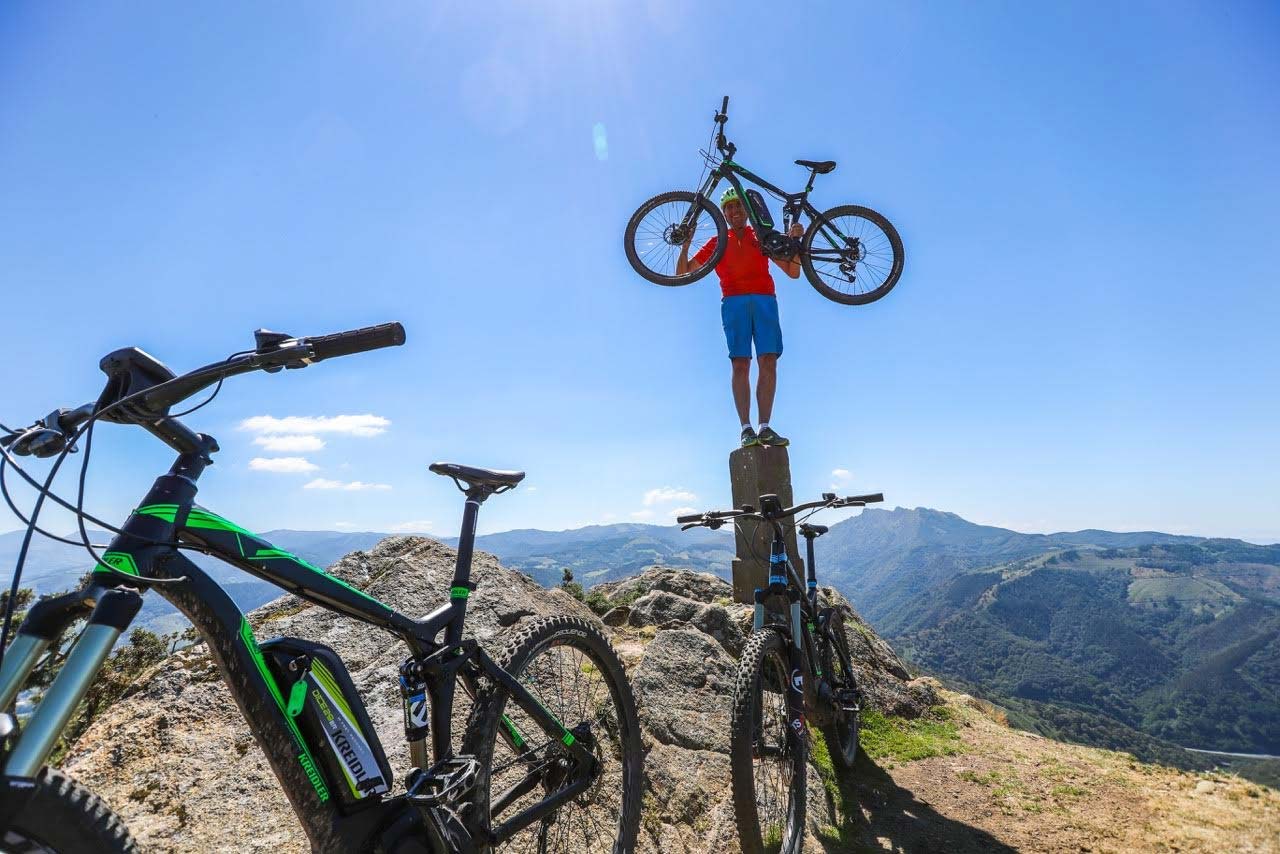
So there we have it, in France the feeling towards eMTBs is overwhelmingly positive. It means more people riding bikes and having fun in the French mountains. With an electric mountain bike you can take on steeper, longer trails whilst staying within your comfort zone.
With the extra push from the motor it’s easy to double the distance covered and access remote terrain that would normally be the reserve of expert riders. However with power comes responsibility, so if you’ve been inspired to give e-biking a go, just respect the trail and other trail users and stay within your limits.
If you’re still sceptical, riding is believing – hit the trails with an open mind and you could well be part of the new wave of eMTB converts.
This article originally appeared in the June 2017 edition of Cycling World magazine.
Text by Matt Watkins, ultimatefrance.com
Pictures by Christophe Febvay from Les Roues de Lilou
